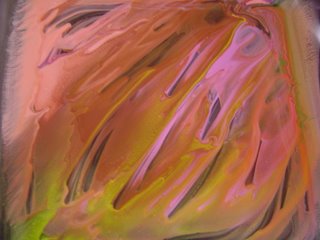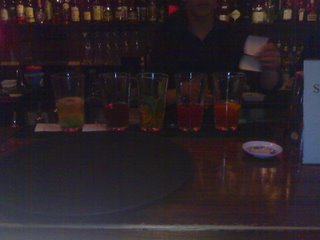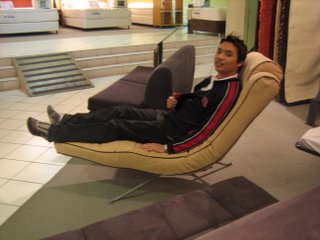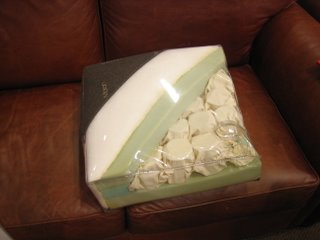 Optical IllusionAn optical illusion characterized by visually perceived images that, at least in common sense terms, are deceptive or misleading. Therefore, the information gathered by the eye is processed by the brain to give, on the face of it, a percept that does not tally with a physical measurement of the stimulus source. A conventional assumption is that there are physiological illusions that occur naturally and cognitive illusions that can be demonstrated by specific visual tricks that say something more basic about how human perceptual systems work.
Optical IllusionAn optical illusion characterized by visually perceived images that, at least in common sense terms, are deceptive or misleading. Therefore, the information gathered by the eye is processed by the brain to give, on the face of it, a percept that does not tally with a physical measurement of the stimulus source. A conventional assumption is that there are physiological illusions that occur naturally and cognitive illusions that can be demonstrated by specific visual tricks that say something more basic about how human perceptual systems work.
From Wikipedia, the free encyclopediaDepth perception also plays a major role in size constancy, the tendency to perceive objects as staying the same size despite changes in our distance from them. When an object is near to us, its image on the retina is large. When that same object is far away, its image on the retina is small. In spite of the changes in the size of the retinal image, we perceive the object as the same size. For example, when you see a person at a great distance from you, you do not perceive that person as very small. Instead, you think that the person is of normal size and far away. Similarly, when we view a skyscraper from far away, its image on our retina is very small—yet we perceive the building as very large.
I’m wanting to look at optical illusions as it correlates well to the idea of disorientation through visual stimulus.
I showed volunteers a series of optical illusions and observed their reactions and asked of their thoughts towards the experience. Most complained of sore eyes by the end but over all it was an experience enjoyed by all and most wanted to do it again. The age limit spanned from 7-69 but the responses were similar. It was more entertainment than discomfort.
................................................................................................................................................................
ImagesI’m still unsure as to what image I am to use but I have more than likely settled on an image that will be familiar to the audience.
I gathered images that I knew were familiar to members of my family and church etc. and altered them slightly, eg. My sisters teddy bear - deleted bow-tie. This brought about some puzzlement as to what exactly was different as the change was so subtle and took time to decipher but over all was seen to be more of a game or test rather than an experience. Also I would need to look more at images that are recogniseable to a wider audience.
.................................................................................................................................................
Inverted Images

Inversion rather than alteration of image may be an option. ?
*Inverted image of the Grand Canyon.................................................................................................................................................................
Sensory DeprivationSensory deprivation is the deliberate reduction or removal of stimuli from one or more of the senses. Simple devices such as blindfolds and earmuffs can cut off sight and hearing, while more complex devices can also cut off the sense of smell, touch, taste, heat-sense and gravity. Sensory deprivation has been used in various alternative medicines and in psychological experiments, for torture or punishment.…tampering with the ears caused more disorientation than with other
senses when tampered.My main interests include confusion and disorientation and so I feel that through deprivation of various senses this may be achieved.
A way I feel this can be accomplished is a variation of the tactics used by security forces in Northern Ireland in the early 1970s. Obviously I will not in-force anywhere near as extreme measures however the findings of disorientation in these cases were interesting. Actions I will implore are wall-standing, participant is forced to take an unnatural physical position. They remain for a period of time in a "stress position", described by those who underwent this experiment as being spread-eagled against the wall, with their fingers put high above the head against the wall, the legs spread apart and the feet back, causing them to stand on their toes, subjection to noise, a room where there is a continuous loud and hissing noise; subjection to silence.
Discomfort seemed to be the general response rather than confusion. There was brief disorientation upon initial release from experiments.
I believe that the subjection to a ‘stress position’ is interesting. I may have the audience in a seated position with the screen high above or behind them, for example, rather than have them exiled from the surroundings.
......................................................................................................................................................................
I took my last idea of forced positioning and ran with it. I found a couple of artist that have used similar techniques and the following is a correlation of those techniques.
I had each volunteer stand before a screen. The participant is forced to look down to the screen, that is placed well below eye level, through goggles which have an almost blurring effect. The noise heard in the headphones pans in and out of the left and right earphones which has a dizzying effect. The sound is made up of white noise of differing frequencies and distortions together. The outcome is an unpleasant and uncomfortable noise.
This experiment took place in my grandparents dimly lit garage. I used a series of photos that I had inverted the colouring of and optical illusions that I had used in previous experiments. I didn’t have extremely high-tech equiptment and so for the goggles I simply took and old pair of googles and scraped them on the concrete so that the vision of the viewer would be impaired.
The sound effects I used were those of mosquitoes etc. taken from my brothers collection and they were run through my computer then through an amp first and then through a set of head phones worn by the participant.
By the end I didn’t feel as well loved by my friends and family as I had during our Sunday lunch earlier that day! My little brother still believed it was all a joke and my grandmother, after hearing reports, refused to take part.
‘I was nervous about what would happen and anxious because I didn’t know when it would end.’
‘I felt very vulnerable in that position’
The older the person the less likely it was that they heard the higher frequency noises.
This wasn’t too difficult to stage and the existing eeriness of the garage was a bonus. If I was to do it again I would like a greater variation of sounds though.
...................................................................................................................................................................
Auditory Illusion
An auditory illusion is an illusion of hearing, the sound equivalent of an optical illusion: the listener hears either sounds which are not present in the stimulus, or "impossible" sounds. In short, audio illusions highlight areas where the human ear and brain, as organic, makeshift tools, differ from perfect audio receptors (for better or for worse).
Examples of auditory illusions:
· the Shepard tone or scale, and the Deutsch tritone paradox
· hearing a missing fundamental frequency, given other parts of the harmonic series
· Various psychoacoustic tricks of lossy Audio compression
· Octave illusion/Deutsch's High-Low Illusion
· Deutsch's scale illusion
· Glissando illusion
· Illusory continuity of tones
· McGurk Effect
http://en.wikipedia.org/wiki/Sensory_deprivation.......................................................................................................................................................................
I gathered 21 people in a small room this weekend and played a variety of sounds. What I found interesting was that it wasn’t just the noise that made them uncomfortable, for the older people it was that they couldn’t hear some of them!
........................................................................................................................................................................
Tactile SoundTactile Sound is the sensation of sound transmitted directly to the human body by contact, rather than by sound waves through the ears. Besides air pressure, tactile sound can be conducted through ground motion.Tactile sound is often used to increase the realism of an artificial environment. For example, mounting a tactile sound transducer in a chair or couch in a home cinema setup can give more of a sense of "being there". For such use, the transducer is often connected to the LFE channel of an A/V receiver. Tactile sound is often used in combination with a subwoofer so that low frequencies can be both felt and heard.
......................................................................................................................................................................
Artwork - Sandman by Patrica Piccinini Patricia Piccinini’s newest installation, Sandman, speculates on the facts and mysteries of human evolution; the transformation from one state of being to another; the emotional turmoil of adolescence; car culture, romance and fate.
Patricia Piccinini’s newest installation, Sandman, speculates on the facts and mysteries of human evolution; the transformation from one state of being to another; the emotional turmoil of adolescence; car culture, romance and fate.
Sandman is an immersive environment in which Piccinini has elaborated the relationships between her photographic, sculptural and film works to create a deliberately enigmatic, multilayered narrative. The episodes of this story unfold gently around and across the gallery space, resulting in a matrix of intersecting ideas and probabilities that leads us to consider the inherent instability of evolutionary processes in our physiological and emotional lives, and in the natural and constructed worlds. Sandman configures a peculiar cultural history in which the panel van, as vehicle and as container of meaning, is brought into play as an ensemble character with the human beings and landscapes in Piccinini’s narrative.Excerpt from Sandman essay by Jason Smith Curator, Contemporary Art, National Gallery of Victoria.

































